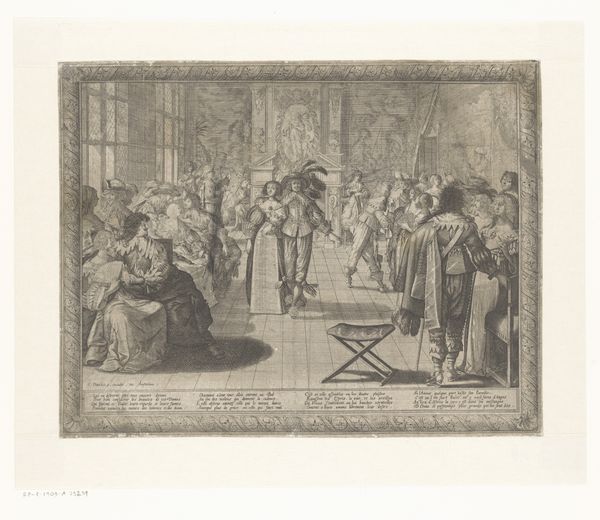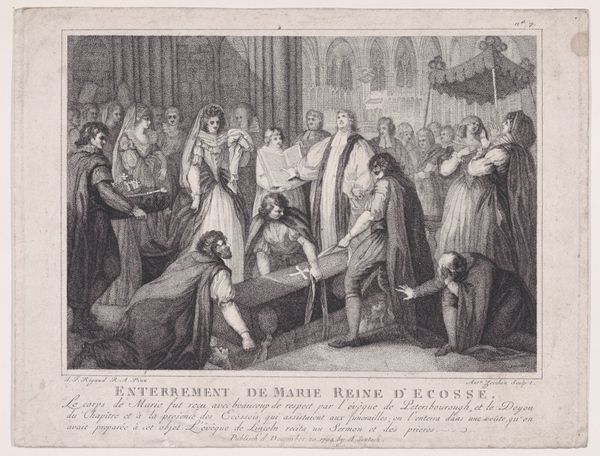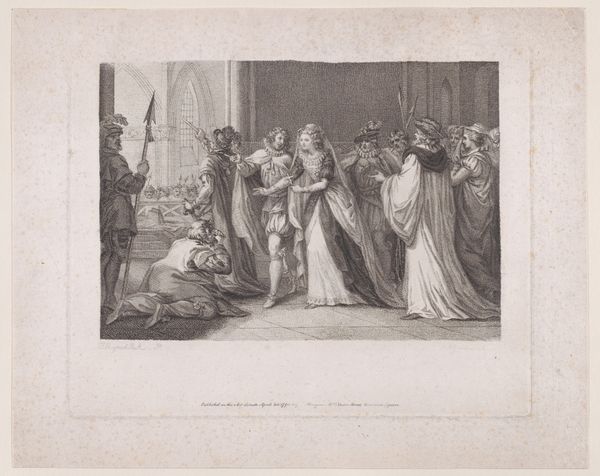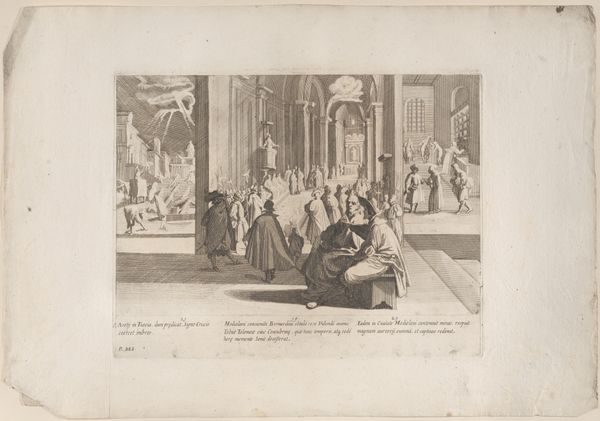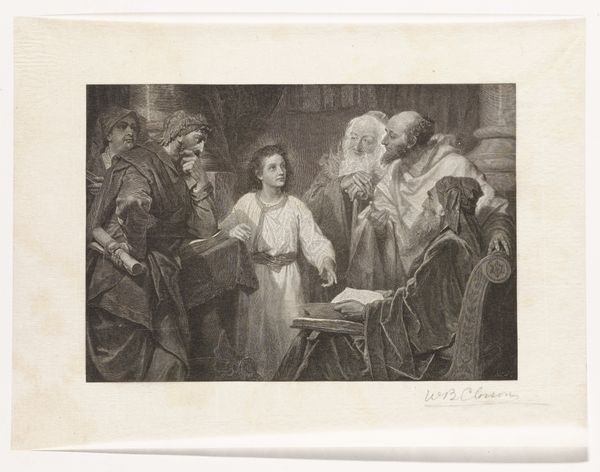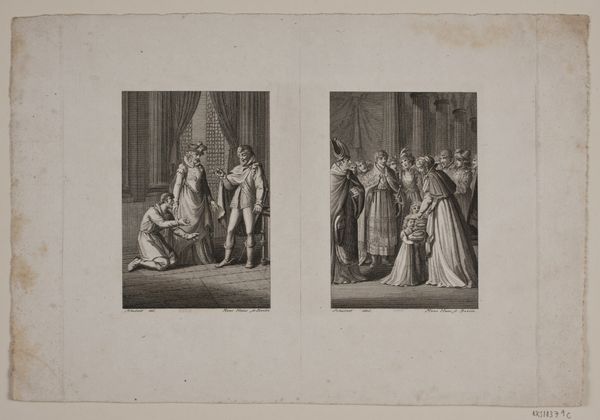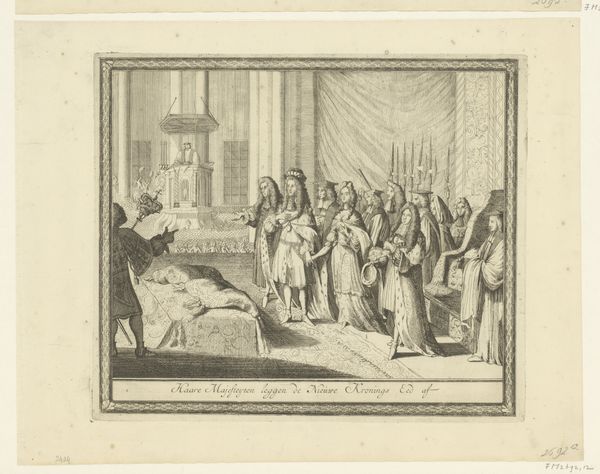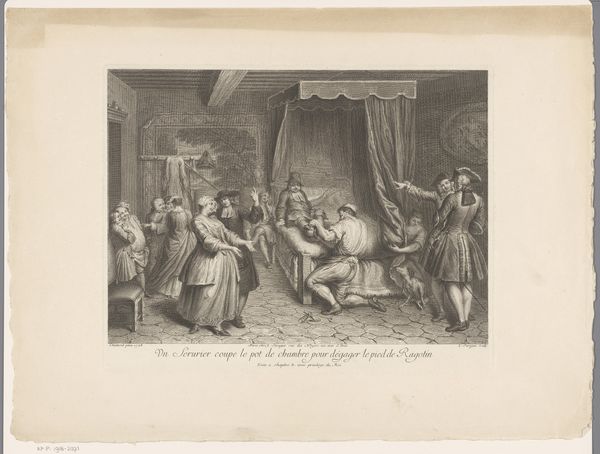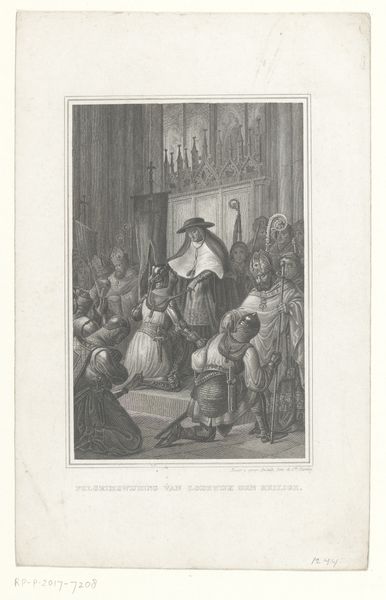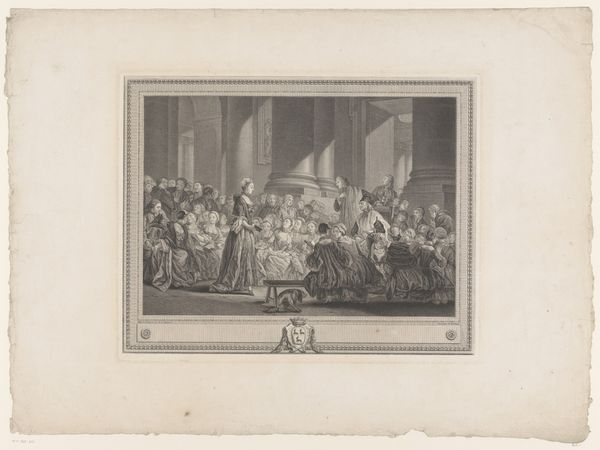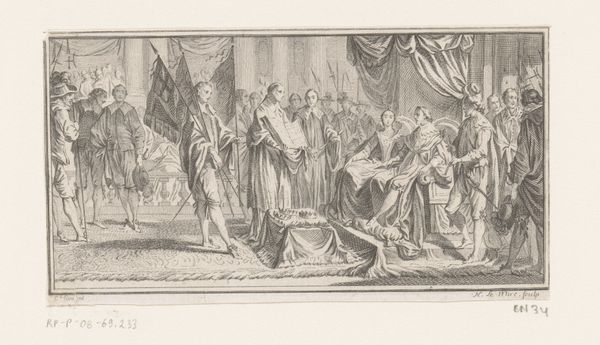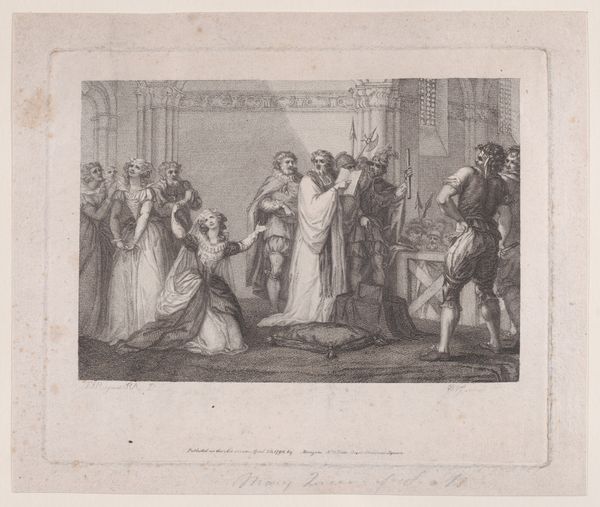
drawing, print, intaglio, engraving
#
drawing
#
narrative-art
# print
#
intaglio
#
figuration
#
watercolour illustration
#
history-painting
#
academic-art
#
engraving
#
realism
Dimensions: Plate: 8 1/16 × 10 1/16 in. (20.4 × 25.5 cm) Sheet: 10 9/16 in. × 12 in. (26.8 × 30.5 cm)
Copyright: Public Domain
Curator: Here we have William Nelson Gardiner's "The Internment of Mary, Queen of Scots" from 1791. Editor: It’s striking! Immediately, I’m drawn to the stark contrast of the dark, engraved lines against the pale paper. It evokes a real sense of somber drama. Curator: Indeed. It's intaglio printmaking, meticulously executed. Gardiner captures a pivotal moment laden with political undertones: Mary’s funeral after her execution. Note the deliberate composition, leading the eye directly to Mary herself. Editor: The labor involved in such detail must have been intense! Look at the sheer number of figures, each rendered with distinct characteristics and textiles. One can almost feel the weight of their garments and the cold stone of the setting. I'm wondering about the intended audience for such a print. Curator: Mass dissemination of history was increasingly in vogue at that moment, with artists like Gardiner helping solidify and spread common perspectives about royalty. Engravings such as this, published and distributed, influenced how Mary's story was consumed by a public keen for dramatic narratives. The Royal Academy, of which Gardiner was a member, sought to define and ennoble history painting for Britain, of course. Editor: It's so fascinating how an artwork functions within a system. This wasn’t just an act of personal expression; it was a calculated deployment of material and method for shaping public opinion, and the narrative itself relies on the exploitation of physical processes. How long would you estimate it took Gardiner to complete the engraving, given its density? Curator: Months, perhaps years, of dedicated craftsmanship. It served to amplify narratives palatable to specific social strata. Editor: Yes, the print became a tangible and accessible object. Looking closely you notice this wasn't simply an illustration but a commodity. Did the method by which engravings were consumed impact interpretations of it as compared to viewing paintings on display? Curator: I believe it shaped the reception quite significantly. Reproductions fostered greater intimacy and domestic consumption of historical events. The market played a critical role in how interpretations of it were shaped. Editor: Absolutely. Seeing art this way offers insight not just into the artwork, but into art’s entanglement with political forces, cultural values, and even consumer markets. Curator: I find the examination of artistic production enriching as well, illuminating the power structures influencing representation. Editor: Agreed. Gardiner’s image reminds us that understanding how things are made sheds new light on what they truly mean.
Comments
No comments
Be the first to comment and join the conversation on the ultimate creative platform.

